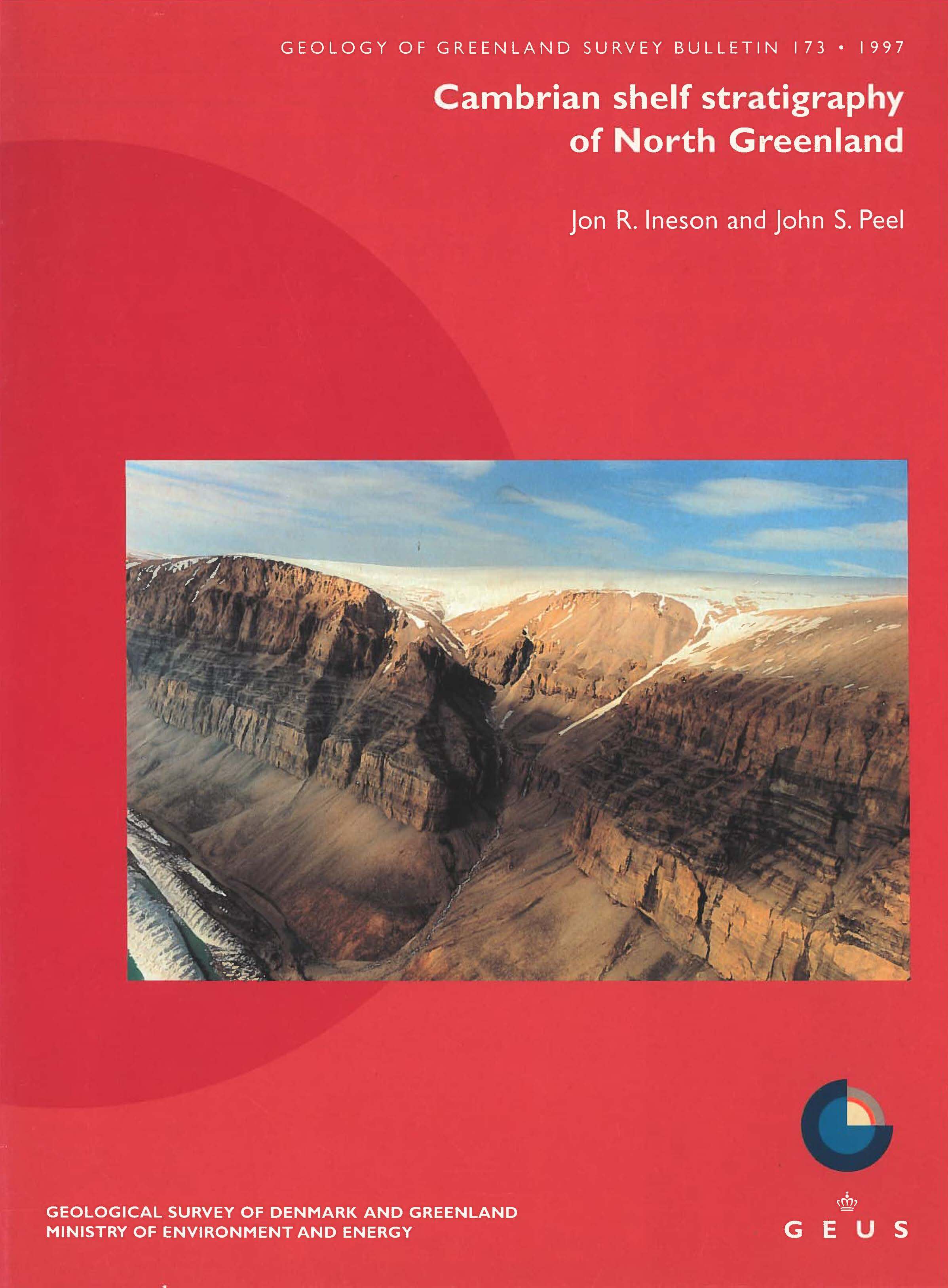Cambrian shelf stratigraphy of North Greenland
DOI:
https://doi.org/10.34194/ggub.v173.5024Keywords:
FRANKLINIAN BASIN, NORTH GREENLAND, SHELF SETTING, CAMBRIAN, LITHOSTRATIGRAPHY, PLATFORM CARBONATES, OUTER SHELF CARBONATES, SILICICLASTICSAbstract
The Lower Palaeozoic Franklinian Basin is extensively exposed in northern Greenland and the Canadian Arctic Islands. For much of the early Palaeozoic, the basin consisted of a southern shelf, bordering the craton, and a northern deep-water trough; the boundary between the shelf and the trough shifted southwards with time. In North Greenland, the evolution of the shelf during the Cambrian is recorded by the Skagen Group, the Portfjeld and Buen Formations and the Brønlund Fjord, Tavsens Iskappe and Ryder Gletscher Groups; the lithostratigraphy of these last three groups forms the main focus of this paper.
The Skagen Group, a mixed carbonate-siliciclastic shelf succession of earliest Cambrian age was deposited prior to the development of a deep-water trough. The succeeding Portfjeld Formation represents an extensive shallow-water carbonate platform that covered much of the shelf; marked differentiation of the shelf and trough occurred at this time. Following exposure and karstification of this platform, the shelf was progressively transgressed and the siliciclastics of the Buen Formation were deposited. From the late Early Cambrian to the Early Ordovician, the shelf showed a terraced profile, with a flat-topped shallow-water carbonate platform in the south passing northwards via a carbonate slope apron into a deeper-water outer shelf region. The evolution of this platform and outer shelf system is recorded by the Brønlund Fjord, Tavsens Iskappe and Ryder Gletscher Groups.
The dolomites, limestones and subordinate siliciclastics of the Brønlund Fjord and Tavsens Iskappe Groups represent platform margin to deep outer shelf environments. These groups are recognised in three discrete outcrop belts - the southern, northern and eastern outcrop belts. In the southern outcrop belt, from Warming Land to south-east Peary Land, the Brønlund Fjord Group (Lower-Middle Cambrian) is subdivided into eight formations while the Tavsens Iskappe Group (Middle Cambrian - lowermost Ordovician) comprises six formations. In the northern outcrop belt, from northern Nyeboe Land to north-west Peary Land, the Brønlund Fjord Group consists of two formations both defined in the southern outcrop belt, whereas a single formation makes up the Tavsens Iskappe Group. In the eastern outcrop area, a highly faulted terrane in north-east Peary Land, a dolomite-sandstone succession is referred to two formations of the Brønlund Fjord Group.
The Ryder Gletscher Group is a thick succession of shallow-water, platform interior carbonates and siliciclastics that extends throughout North Greenland and ranges in age from latest Early Cambrian to Middle Ordovician. The Cambrian portion of this group between Warming Land and south-west Peary Land is formally subdivided into four formations.The Lower Palaeozoic Franklinian Basin is extensively exposed in northern Greenland and the Canadian Arctic Islands. For much of the early Palaeozoic, the basin consisted of a southern shelf, bordering the craton, and a northern deep-water trough; the boundary between the shelf and the trough shifted southwards with time. In North Greenland, the evolution of the shelf during the Cambrian is recorded by the Skagen Group, the Portfjeld and Buen Formations and the Brønlund Fjord, Tavsens Iskappe and Ryder Gletscher Groups; the lithostratigraphy of these last three groups forms the main focus of this paper.
The Skagen Group, a mixed carbonate-siliciclastic shelf succession of earliest Cambrian age was deposited prior to the development of a deep-water trough. The succeeding Portfjeld Formation represents an extensive shallow-water carbonate platform that covered much of the shelf; marked differentiation of the shelf and trough occurred at this time. Following exposure and karstification of this platform, the shelf was progressively transgressed and the siliciclastics of the Buen Formation were deposited. From the late Early Cambrian to the Early Ordovician, the shelf showed a terraced profile, with a flat-topped shallow-water carbonate platform in the south passing northwards via a carbonate slope apron into a deeper-water outer shelf region. The evolution of this platform and outer shelf system is recorded by the Brønlund Fjord, Tavsens Iskappe and Ryder Gletscher Groups.
The dolomites, limestones and subordinate siliciclastics of the Brønlund Fjord and Tavsens Iskappe Groups represent platform margin to deep outer shelf environments. These groups are recognised in three discrete outcrop belts - the southern, northern and eastern outcrop belts. In the southern outcrop belt, from Warming Land to south-east Peary Land, the Brønlund Fjord Group (Lower-Middle Cambrian) is subdivided into eight formations while the Tavsens Iskappe Group (Middle Cambrian - lowermost Ordovician) comprises six formations. In the northern outcrop belt, from northern Nyeboe Land to north-west Peary Land, the Brønlund Fjord Group consists of two formations both defined in the southern outcrop belt, whereas a single formation makes up the Tavsens Iskappe Group. In the eastern outcrop area, a highly faulted terrane in north-east Peary Land, a dolomite-sandstone succession is referred to two formations of the Brønlund Fjord Group.
The Ryder Gletscher Group is a thick succession of shallow-water, platform interior carbonates and siliciclastics that extends throughout North Greenland and ranges in age from latest Early Cambrian to Middle Ordovician. The Cambrian portion of this group between Warming Land and south-west Peary Land is formally subdivided into four formations.
Downloads
Additional Files
- Colophon, introduction, geological framework, early Cambrian lithostratigraphy, Brønlund Fjord and Tavsens Iskappe Groups: amended definition
- Brønlund Fjord and Tavsens Iskappe Groups: southern outcrop belt
- Brønlund Fjord and Tavsens Iskappe Groups: northern outcrop belt, eastern outcrop belt, Ryder Gletscher Group: amended definition, southern outcrop belt, acknowledgements, references
Published
Issue
Section
License
This article is distributed under a CC-BY 4.0 licence, permitting free redistribution and reproduction for any purpose, even commercial, provided proper citation of the original work. Author(s) retain copyright over the article contents.


